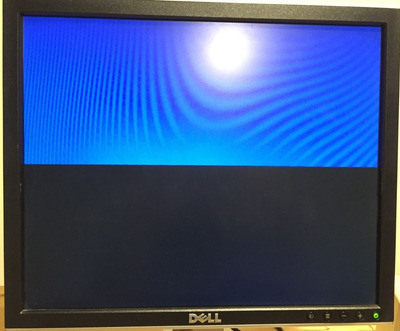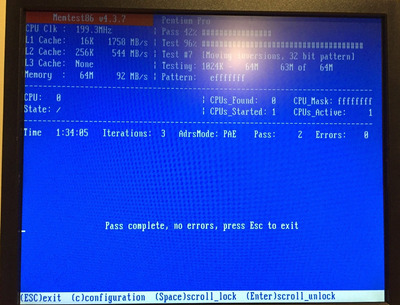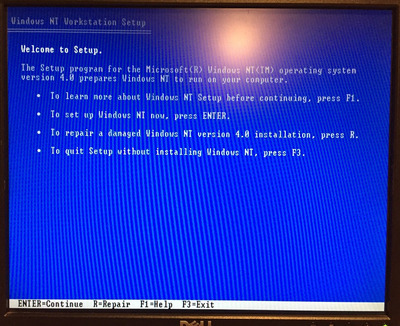First post, by Boctor
Recently, I have been trying to install Windows NT4, 2000, or even XP (purely for the sake of testing) on a build with an ECS P6FX1-A motherboard, revision 1.2. For a few years, I have only used this computer and board with Windows 98SE, and everything has worked perfectly, even for playing games like Quake 2. I found this board in a computer an office was getting rid of, running Windows 95. It was still completely working, and spent practically its entire life on the same desk. Being curious about the reported performance improvements from a pure 32-bit operating system on a Pentium Pro, I decided to try my luck. Other forum posts about this motherboard occasionally mentioned running Windows 2000 on it, or at least NT at all. I already have a Super Socket 7 box for 16-bit DOS things, so why not?
Unfortunately, every NT-based installer I've tried seems to freeze during the initial loading, before even reaching the formatting or file copying stages. 2000/XP will freeze when trying to start Windows, toward the end. NT4.0 freezes while just loading things on floppy 2 of 3, usually the FAT, keyboard, or video driver. I stopped lurking and finally registered, in hopes I could at least get a second opinion. Best case scenario, it's something obvious that someone with relevant experience can isolate. Worst case, at least I know this motherboard isn't worth more of my time. There are no visible problems with the motherboard, physically. It appears to be in excellent shape, not even dirty and no corrosion anywhere. I can provide photos of the board or the internals, but nothing obvious seems to be going on in there.
Motherboard: ECS P6FX1-A Rev1.2
BIOS: 1.5
Processor: Pentium Pro 200Mhz (256k L2)
Memory: 64MB (16 x 4) EDO SIMMs
Floppy: One very normal Sony 3.5" microfloppy drive
Optical: HP dvd640, also tried a noisier Lite On DVD drive with no differences
HDD: Tried both CF card and 20GB Seagate IDE HDD
Power Supply: Corsair CX500
Cooler: More-than-adequate
VGA: SiS 6326 4MB
Audio: PCI "SoundBlaster"
Other expansion cards: USB; Netgear RJ45 10/100 Ethernet
Peripherals: IBM Model M and IntelliMouse Explorer, both PS/2
- Reading the manual
- Installing a new Dallas RTC module with battery holder (DS1687-5 compatible one from glitchworks. The datasheet showed it as pin-compatible the DS12B887, which was installed before, so please tell me if I've fudged anything here!)
- Flashing all the BIOS versions available (1.4, 1.4d, 1.5) with no change in results, aside from 1.4 booting much slower and generally being worse at doing so
- Swapping out the floppy drive, HDD, and DVD-ROM drive
- Using different installation media, in case of astronomically bad discs
- Resetting CMOS settings to BIOS defaults and to setup defaults
- Clearing CMOS data entirely, via jumpers, software, and Uniflash 1.40
- Removing all expansion cards except for the SiS 6326 video card
- Swapping the SiS video card for an older Trident VGA card
- Setting the jumpers to run the CPU at 166Mhz instead of 200Mhz
- Disabling the L2 cache
- Swapping the memory, installing only one bank of SIMMs, changing memory from 60ns to 70ns, almost everything RAM-related
- Loading the Intel PIIX Bus Master driver from an F6 floppy, while loading the NT4.0 installer
- Re-seating all possible connectors
- Booting an installer with the HDD, optical, or floppy drive completely disconnected (depending on which media it's run from to begin with)
- Precopying the Windows 2000 installation files onto the hard disk from in Windows 98SE, and attempting to boot the installer from there
Other observations:
- Attempting to boot a different machine's hard disk with Windows 2000 already installed also freezes, with the loading bar full. Guessing during ntoskrnl initialization, it panics or something.
- When the NT4.0 installation freezes, the top half of the screen is blue and the bottom half is black. There is no text, no seams, nothing but these two solid colors. The floppy I/O LED stays lit.
- TinyCore Linux i386 works perfectly fine. The graphical desktop, common shell commands, and drivers for the NIC all seem to work without issue.
- I am grateful for any help or second opinions. I will provide pictures of the hardware/screen, elaborate on specs of parts as needed, etc., as needed.



